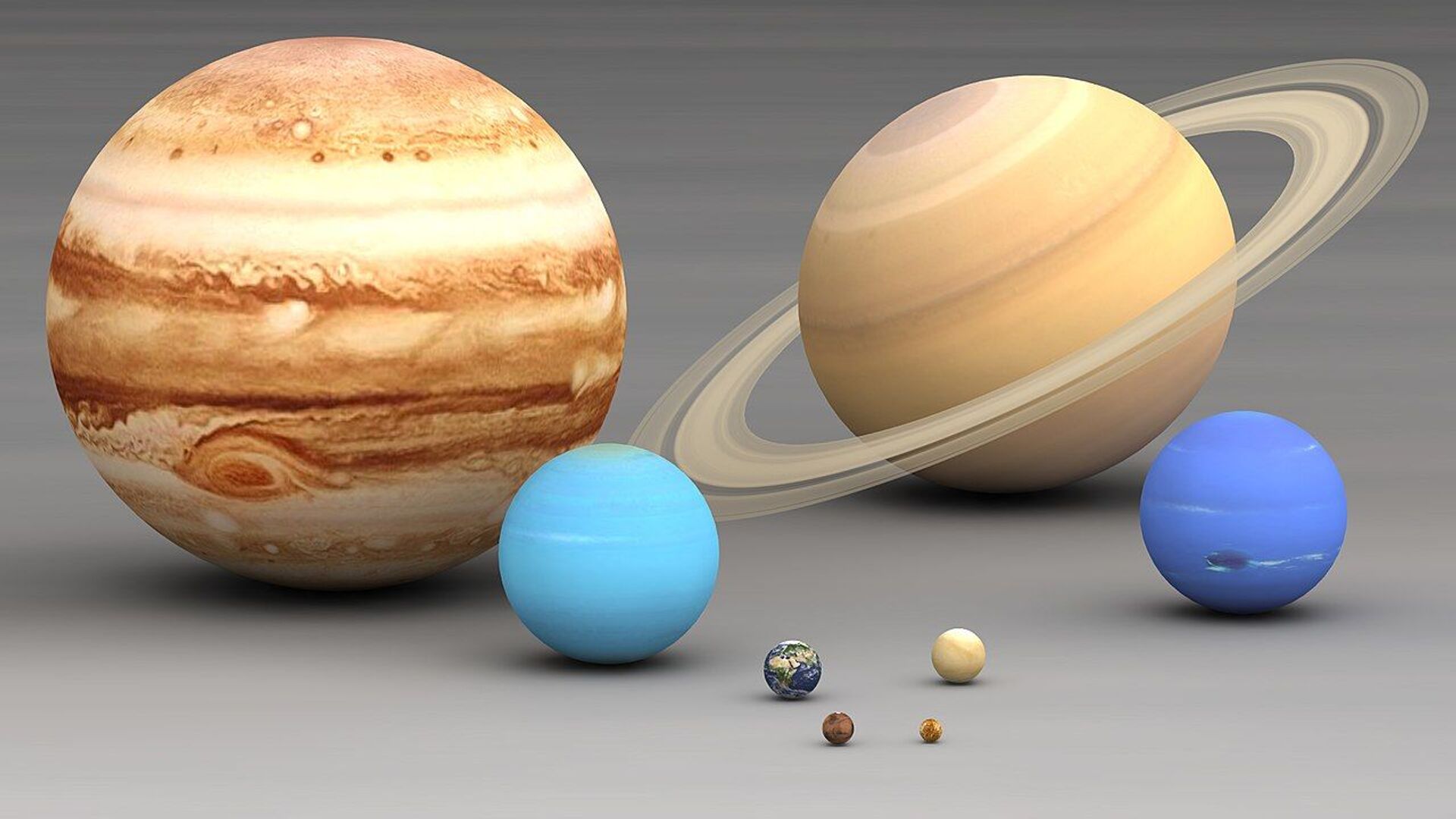https://sputnikglobe.com/20240106/new-images-show-what-neptune-uranus-actually-look-like-1116008717.html
New Images Show What Neptune, Uranus Actually Look Like
New Images Show What Neptune, Uranus Actually Look Like
Sputnik International
Recent analysis by scientists at the University of Oxford claims the two “ice giants” share a similar hue.
2024-01-06T03:54+0000
2024-01-06T03:54+0000
2024-01-06T03:54+0000
beyond politics
uranus
neptune
university of oxford
nasa
science & tech
astronomy
https://cdn1.img.sputnikglobe.com/img/07e4/0c/04/1081355369_0:0:1280:720_1920x0_80_0_0_65deffe935d87e3ae96ffd7eb596e519.jpg
British researchers have revealing new photos of Uranus.Scientists at the University of Oxford released the images of the planet and its celestial neighbor Neptune on Friday, along with analysis claiming to dispel what astronomers now believe is a common misconception about them. The research was headed by Professor Patrick Irwin at the school’s Department of Physics.Widely disseminated photos and illustrations of the planets have more or less faithfully depicted the hue of Uranus according to the scientists, rendering it as a pale cyan with a very slight green tint. But Neptune has been portrayed in a shade more similar to royal blue. The researchers say artificial enhancement of photos dating to NASA’s Voyager 2 flyby in the 1980s is partially to blame.Neptune is distinguished in part by its faint swirls of clouds and wind versus the more uniform appearance of Uranus. Contrast was increased on the images of Neptune to better demonstrate its texture, but the adjustments resulted in an inaccurate portrayal of the planet’s color.Professor Irwin’s team says single-color images captured by Voyager 2 were also sometimes incorrectly combined, creating misleading composite photos.The scientists achieved similar results by applying the same process to images from various sources, which they say proves the reliability of their method.The researchers also developed an explanation for why Uranus sometimes appears to have a greener tint. High levels of methane in the planet’s atmosphere typically absorb green light, but the researchers say Uranus’s atmosphere is thinner around its poles for reasons they still don’t understand. The planet almost spins on its side with its poles facing Earth during its summer and winter, reflecting green light towards observers.
uranus
neptune
Sputnik International
feedback@sputniknews.com
+74956456601
MIA „Rossiya Segodnya“
2024
Sputnik International
feedback@sputniknews.com
+74956456601
MIA „Rossiya Segodnya“
News
en_EN
Sputnik International
feedback@sputniknews.com
+74956456601
MIA „Rossiya Segodnya“
Sputnik International
feedback@sputniknews.com
+74956456601
MIA „Rossiya Segodnya“
neptune, uranus, astronomy, nasa, astronomy, university of oxford
neptune, uranus, astronomy, nasa, astronomy, university of oxford
New Images Show What Neptune, Uranus Actually Look Like
Recent analysis by scientists at the University of Oxford claims the two “ice giants” share a similar hue.
British researchers have revealing new photos of Uranus.
Scientists at the University of Oxford released the images of the planet and its celestial neighbor Neptune on Friday, along with analysis claiming to dispel what astronomers now believe is a common misconception about them. The research was headed by Professor Patrick Irwin at the school’s Department of Physics.
“Professor Irwin and his team found that both planets are in fact a similar shade of greenish blue, despite the commonly-held belief that Neptune is a deep azure,” read a
press release on the university’s website.
Widely disseminated photos and illustrations of the planets have more or less faithfully depicted the hue of Uranus according to the scientists, rendering it as a pale cyan with a very slight green tint. But Neptune has been portrayed in a shade more similar to royal blue. The researchers say artificial enhancement of photos dating to NASA’s Voyager 2 flyby in the 1980s is partially to blame.
Neptune is distinguished in part by its faint swirls of clouds and wind versus the more uniform appearance of Uranus. Contrast was increased on the images of Neptune to better demonstrate its texture, but the adjustments resulted in an inaccurate portrayal of the planet’s color.
Professor Irwin’s team says single-color images captured by Voyager 2 were also sometimes incorrectly combined, creating misleading composite photos.
“Even though the artificially-saturated colour was known at the time amongst planetary scientists – and the images were released with captions explaining it – that distinction had become lost over time,” said Irwin. “Applying our model to the original data, we have been able to reconstitute the most accurate representation yet of the colour of both Neptune and Uranus.”
The scientists achieved similar results by applying the same process to images from various sources, which they say proves the reliability of their method.
The researchers also developed an explanation for why Uranus sometimes appears to have a greener tint. High levels of methane in the planet’s atmosphere typically absorb green light, but the researchers say Uranus’s atmosphere is thinner around its poles for reasons they still don’t understand. The planet almost spins on its side with its poles facing Earth during its summer and winter, reflecting green light towards observers.
“The misperception of Neptune’s colour, as well as the unusual colour changes of Uranus, have bedevilled us for decades,” said Dr. Heidi Hammel of the Association of Universities for Research in Astronomy (AURA). “This comprehensive study should finally put both issues to rest.”


